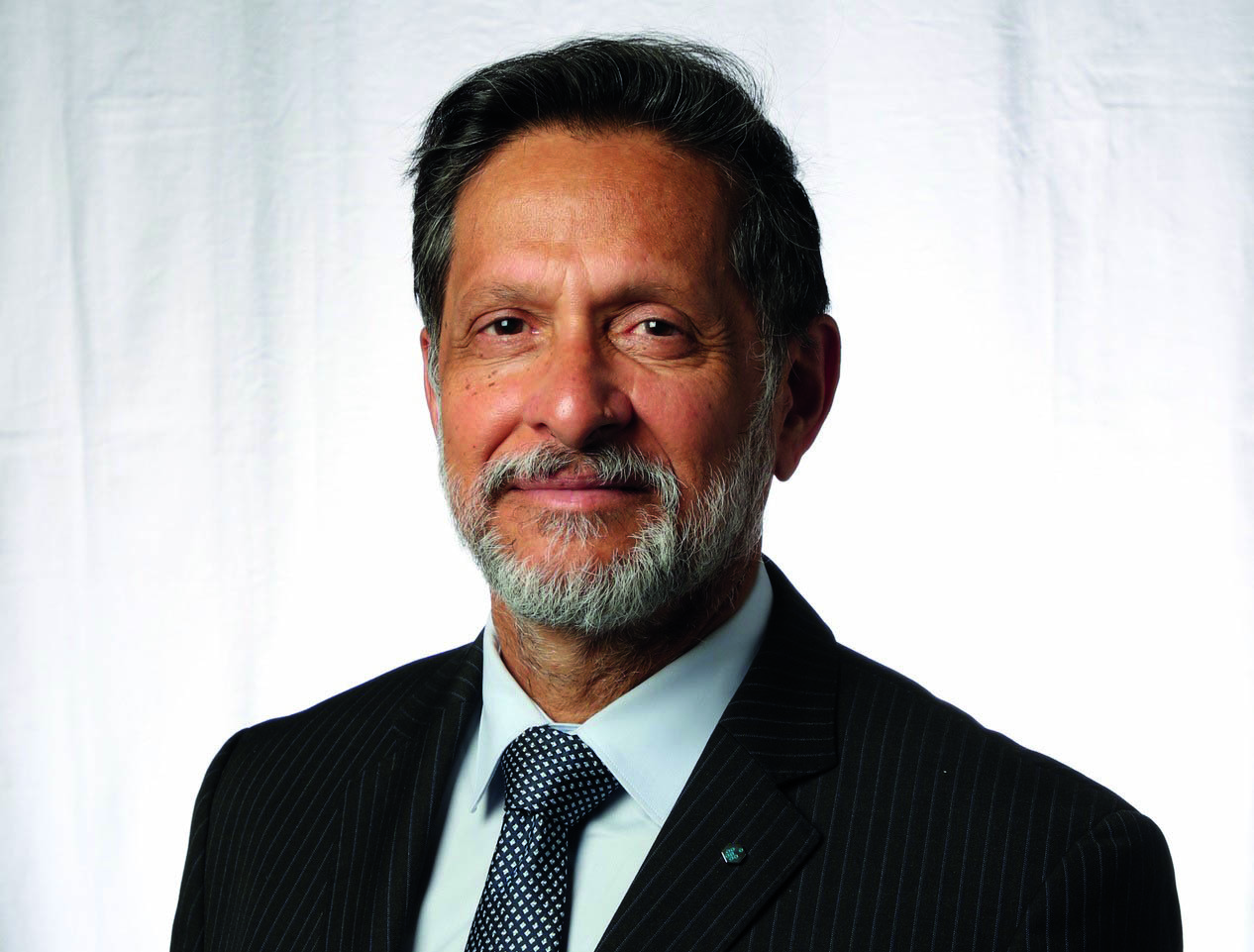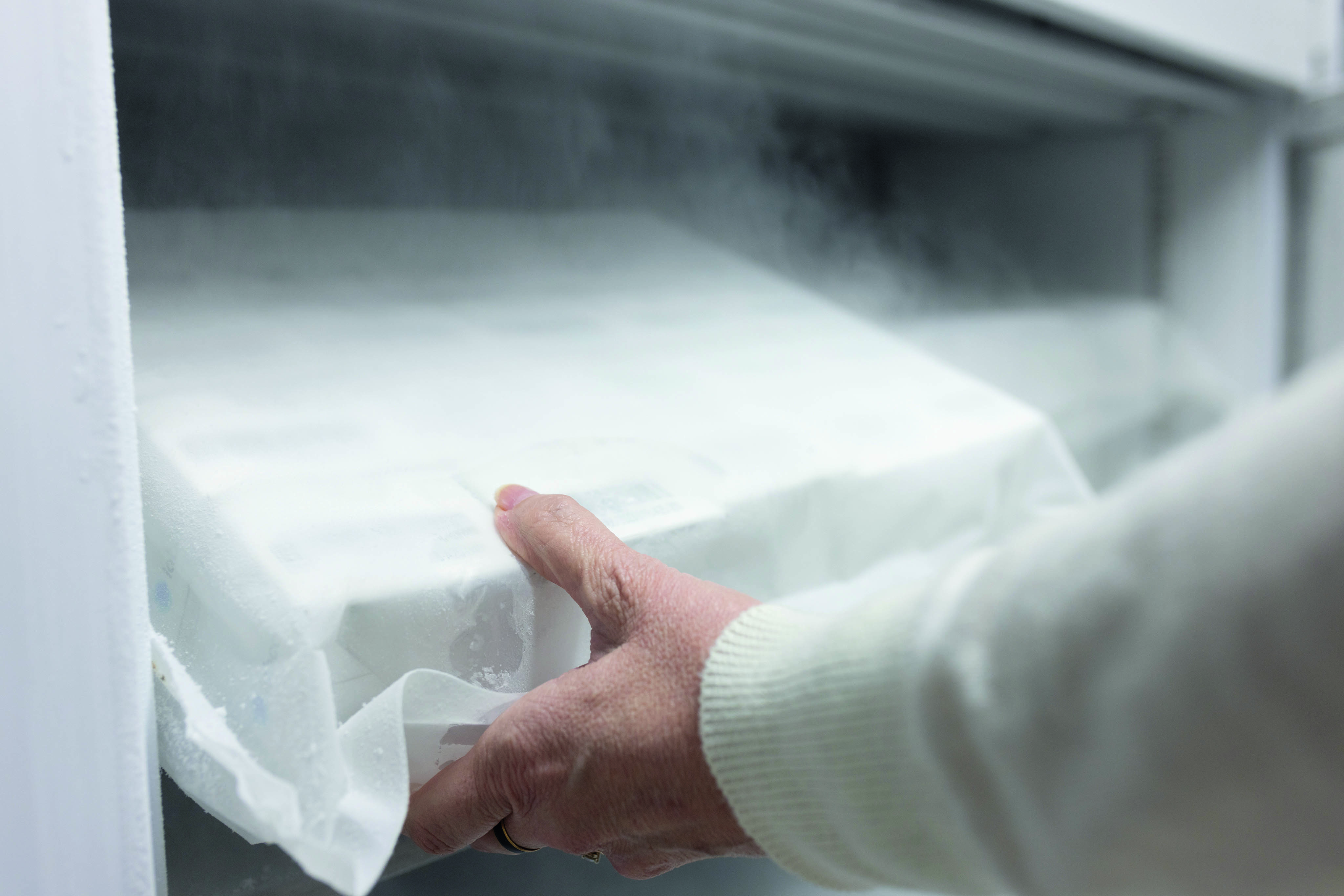Redefining Metabolic Health

Editor's Note: This feature was originally published in print prior to the March 2024 FDA approval of resmetirom, the first and only approved drug to treat metabolic dysfunction–associated steatohepatitis. Arun Sanyal, M.D., was an investigator in the phase 3 clinical trials and a key leader in building pathways for developing treatments. He issued the following statement after news of the FDA approval: “This is a major milestone for our patients and for the field. MASH is a leading cause of liver-related morbidity and mortality. With approved resmetirom, our patients with clinically significant scarring of the liver due to MASH will have access to an effective and approved therapeutic agent to reverse disease progression. As an investigator working on MASH, I congratulate Madrigal Pharmaceuticals and the communities of scientists and patients who participated in the treatment trials to make approved therapy for MASH a reality.”
By A.J. Hostetler, Stravitz-Sanyal Institute for Liver Disease and Metabolic Health
The liver is a powerhouse.
The low-key, often overlooked organ handles essential functions such as detoxification, metabolism and nutrient storage. It breaks down toxins, aids digestion and produces bile to help absorb fats and fat-soluble vitamins. In short, the liver ensures the healthy functioning of other vital organs, like the heart, the brain and kidneys.
Although resilient, the liver is susceptible to various diseases, including fatty liver disease. Often, the warning signs come too late to reverse damage. As fat builds up in the liver, inflammation and scarring, or fibrosis, affect the liver’s function in myriad processes for the body.
We are helping create a global community to shift the paradigm for liver health, so that our patients, both in Virginia and beyond, can get the care they need faster.
Arun J. Sanyal, M.D., professor, VCU School of Medicine, and director of the Stravitz-Sanyal Institute for Liver Disease and Metabolic Health
Left unaddressed, the scarring and inflammation progress to cirrhosis, making organ transplant the only option for patients. Transplantation is not a realistic solution to this issue because demand for liver transplants has grown steadily since 2012, outpacing the supply of available livers. Moreover, the prevalence of fatty liver disease, propelled by the increase in obesity and diabetes, also dwarfs the supply of liver donations, even with the ability to transplant a portion of a liver from a living donor. As many as 15 million people in the U.S. are affected by this form of advanced liver disease, and there are no approved treatments.
On the MCV Campus, clinician-researcher Arun J. Sanyal, M.D., has focused his career on better understanding and developing ways to address the growing problem of liver health. Dr. Sanyal is a professor in the VCU School of Medicine and director of the Stravitz-Sanyal Institute for Liver Disease and Metabolic Health. Dr. Sanyal is internationally known for his work in the development of therapeutics for reducing liver disease around the globe. For years he has led a program in gastroenterology and hepatology that is ranked 17th in the world by U.S. News & World Report. He has won multiple national awards, such as the 2018 Distinguished Achievement Award from the American Association for the Study of Liver Diseases. He also founded the Liver Forum, which brings the U.S. Food and Drug Administration and European Medicines Agency together with academics and industry to facilitate drug development.
In September, ScholarGPS, which analyzes researchers and their publications worldwide based on productivity, impact and quality, gave a lifetime ranking to Dr. Sanyal as fifth among hepatologists overall. He was also ranked No. 2 among those specializing in liver disease. The ScholarGPS database covers more than 30 million scholars in more than 200 countries, and, according to the company, Dr. Sanyal has published 935 publications and been cited by other researchers more than 104,566 times. Dr. Sanyal’s vision for the liver institute was a key inspiration for its creation in February 2022 following a historic and transformational gift from the Barbara Brunckhorst Foundation. A longtime friend and colleague, R. Todd Stravitz, M.D., gave $104 million through his family’s foundation to fast-track Dr. Sanyal’s vision for the liver institute. That funding will fuel research activity and treatment, as well as provide training for a future global network of liver health researchers and clinicians.
“The heart of this is the ability to transform the lives of people with liver disease around the world,” Dr. Sanyal said. “With every new finding, you can impact a million people. That’s what makes research so powerful.”
A NEW NOMENCLATURE
Earlier this year, at an international liver conference in Vienna, Dr. Sanyal helped introduce a newly established naming and classification system for fatty liver disease. Over the years, this disease has been defined and classified by various terms, leading to confusion among health care providers, researchers and patients. This hindered effective communication and even research efforts to address complex liver disease comprehensively.
In 2020, multinational liver associations and patient advocacy groups convened a group to review naming and definition options for the stages of fatty liver disease. The names adopted in summer 2023 emphasize the metabolic underpinnings of the liver condition, aligning it more closely with its root causes, such as obesity or diabetes.
Fatty liver disease, now called steatotic liver disease, can progress to a more severe form, which involves liver inflammation and potential scarring, which can worsen into cirrhosis and perhaps lead to a liver transplant.
What was previously called nonalcoholic fatty liver disease (NAFLD) will now be metabolic dysfunction-associated steatotic liver disease (MASLD). The NIH estimates around a quarter of the U.S. population has both the hepatic steatosis and at least one of five cardiometabolic risk factors that define this condition. Similarly, metabolic dysfunction-associated steatohepatitis (MASH) replaces nonalcoholic steatohepatitis (NASH).
With clearer communication, tailored treatment plans and patient empowerment, health care providers, patients and the public can work together toward fostering a healthy future for all. The nomenclature also aims to remove perceived connections or stigma related to liver disease and alcoholism.
A NIMBLE, NONINVASIVE APPROACH TO SCREENING

The Stravitz-Sanyal Institute is leading a critical effort to develop noninvasive screening tests that would allow physicians to assess a patient’s liver health without the invasive, surgical requirements of a biopsy.
MASH is often called a silent disease because patients do not display symptoms until later stages of the condition, when they develop cirrhosis. There are no FDA-approved treatments for the disease, which affects about 6% of the U.S. population, or around 20 million people. About 20% of those patients with MASH progress to cirrhosis.
Dr. Sanyal is leading a global consortium studying and developing noninvasive tests for liver disease, and his group has successfully demonstrated the effectiveness of five noninvasive tests, a significant milestone on the path to regulatory approval. In an article published this fall in the journal Nature Medicine, Dr. Sanyal and colleagues report on five biomarker tests that potentially could be given to patients who may have MASH.
The research to evaluate blood and imaging biomarker tests for liver disease is part of NIMBLE — the Noninvasive Biomarkers of Metabolic Liver Disease project, a public-private partnership involving the Foundation for the National Institutes of Health, the Food and Drug Administration, academic researchers and industry partners. Dr. Sanyal, who is the first author of the Nature Medicine paper, chairs the FNIH Biomarkers Consortium NIMBLE program.
Although several companies have developed such tests, none has yet met the requirements for FDA regulatory approval. Finding alternatives to liver biopsy is critical.
“Currently, diagnosing early-stage MASH requires a liver biopsy, which is a painful, invasive and expensive process for patients,” Dr. Sanyal said. “MASH is a serious disease, and once the liver starts to scar up, the risk of cirrhosis, liver cancer and death rises, often leaving transplant the only treatment option for patients.”
The NIMBLE biomarker tests were compared to standard measures, such as the FIB-4, an index used to gauge liver health developed by Richard Sterling, M.D., clinical director at the liver institute and a professor of medicine in the School of Medicine’s Division of Gastroenterology, Hepatology and Nutrition and its Division of Infectious Diseases. Each biomarker test that met or exceeded the performance of current lab tests was evaluated for use in diagnosing MASH and related conditions among the more than 1,000 patients who participated in the newly published research.
“This brings us a step closer to having simple blood-based tests that can be ordered in virtually any clinical setting and will provide access to care to patients,” Dr. Sanyal said. “Such a step will facilitate our ability to identify those most at risk of outcomes and target them for therapy. It will also serve as a foundation for prognostic, disease monitoring and treatment-response biomarker development.”
Having accurate biomarker tests for MASH is expected to encourage patients to participate in future clinical trials, which would otherwise require liver biopsies. Using noninvasive blood tests may also significantly reduce costs of such studies, increasing interest in drug development. Equally important, the tests could be easily ordered in a doctor’s office.
“Dr. Sanyal’s leadership of the NIMBLE project has been invaluable as we move toward our goal of fully qualifying noninvasive biomarkers through the FDA,” said Tania Kamphaus, Ph.D., a co-author of the paper and leader of FNIH’s metabolic disorders and patient engagement efforts. “The initial study findings demonstrate that these tests have the potential to enable breakthrough discoveries in developing new treatments for patients with liver disease.”

WHAT’S NEXT?
Therapeutic interventions are an area of intense focused inquiry for Dr. Sanyal. There is a desperate need for treatments that can stop or reverse the progression of scarring in patients with metabolic dysfunction-associated steatotic liver disease. The FDA has begun considering potential approval for drugs to treat MASLD, and many investigators, including Dr. Sanyal, have been thinking beyond diagnosis, interventions and disease regression toward future therapies.
“There are a number of different approaches,” Dr. Sanyal explained. “We are looking at the other recent drugs that target the same receptors of bile acids to improve the body’s metabolic state. We’re also working on very cheap, simple solutions, such as vitamin E. We published a paper 10 years ago in showing that vitamin E can reverse the disease in a significant proportion of patients. And we are now working with the NIH to do additional studies to make sure we get the dosing correct, which we plan to follow with a more definitive study.”
In June 2023, he co-authored a paper with researchers at University of California San Diego regarding a drug called pegozafermin that mimics a hormone secreted in the body and showed that it could improve both liver scarring and inflammation in patients. Additional trials are anticipated for this drug. He also continues to work on clinical trials investigating resmetirom, a therapy that mimics a thyroid hormone receptor critical in healthy liver function and has shown the potential to reduce inflammatory liver fat and fibrosis while lowering cholesterol and other atherogenic lipids. Dr. Sanyal oversees one of the clinical trial sites evaluating the drug’s effects.
“I’m incredibly proud of what we have accomplished, and we’re only just getting started,” Dr. Sanyal said. “We are helping create a global community to shift the paradigm for liver health, so that our patients, both in Virginia and beyond, can get the care they need faster.”
If you would like to support Stravitz-Sanyal Institute research, please contact Niles Eggleston, VCU’s senior associate vice president for medical philanthropy and alumni relations, at egglestonn@vcu.edu or 804-828-2112.
Discover More
Read more features like this in the winter issue of NEXT magazine.